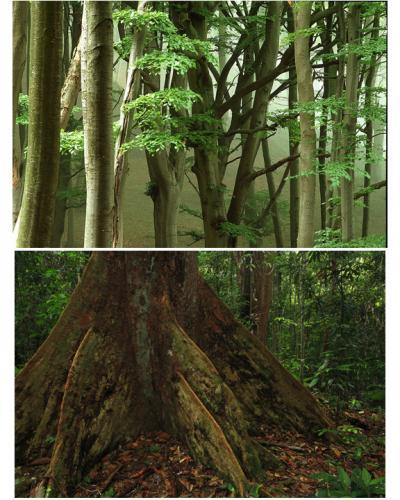Measurements of variation in biodiversity from place to place, called beta diversity, are actually very similar as you move from the tropics to the poles when you account for the number of species present in the first place. And forests in Canada and Europe may have much more in common with tropical rainforests than previously believed.
"We see that biodiversity patterns can be explained not by current ecological processes, unfolding over one or two generations, but by much longer-term historical and geological events," said Dr. Nathan J.B. Kraft, post-doctoral fellow at the University of British Colombia, who led the research team. "The same ecological processes seem to be working worldwide. The difference is that tropical organisms have been accumulating for vast periods of time."

Split image showing highly diverse tropical forest in Borneo (Lambir) on the bottom and a lower diversity temperate beech forest in Jasmund National Park (Germany) on the top. Credit: Christian Ziegler
"Fossils tell a similar story," said STRI scientist, Aaron O'Dea, co-author, with Willem Renema and others, of a 2008 article in Science showing that marine biodiversity hotspots could be traced back to ancient areas of tectonic activity. "Geological history reveals that glaciations and mass extinctions have lasting effects on the structure of biological communities. It bears witness to the devastation that occurs when accumulated biodiversity is lost: a threat we are facing today."






Comments